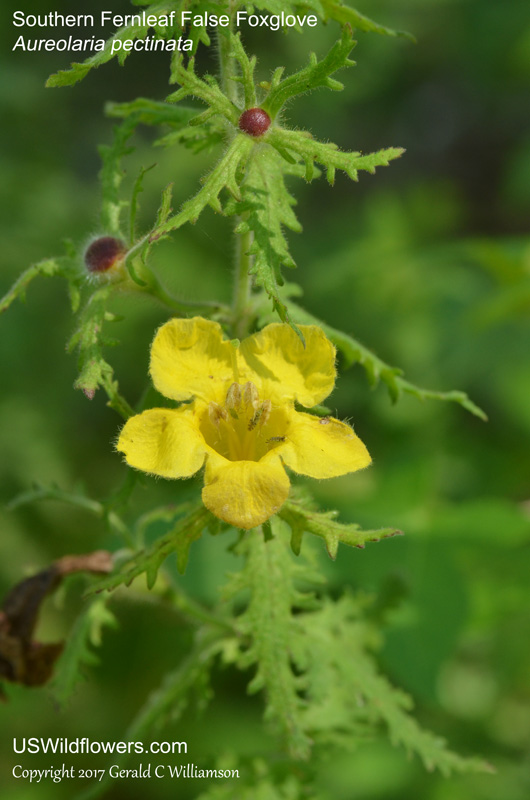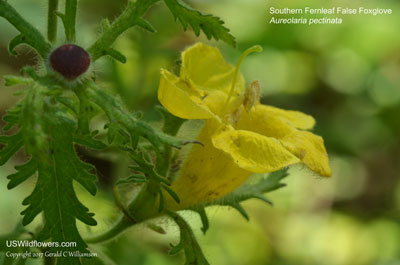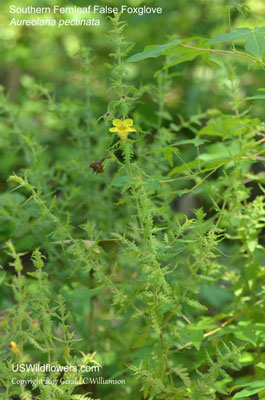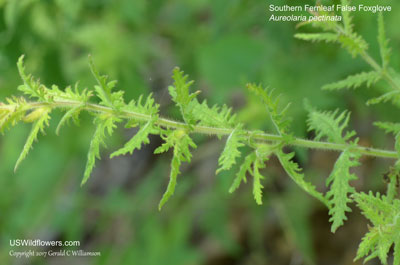Wildflowers of the United States | |||||||||||||
| |||||||||||||
Aureolaria pectinata - Southern Fernleaf False Foxglove, Southern Oak-leech, Cut-leaved Gerardia, Combleaf Yellow False Foxglove. Aureolaria is a genus of 9 or 10 species in eastern North America and Mexico. These species had been classified within Gerardia originally, but many were incorrectly placed there. When that was corrected and Aureolaria was created (along with several other formerly-Gerardia genera), the remainder of Gerardia was placed in Agilinis, which appears to be the most closely related genus to Aureolaria, with the key differentiator between the two genera being flower color, with Aureolaria yellow and Agilinis purple. Both are pollinated by bumblebees. Both genera were moved from Scrophulariaceae to Orobanchaceae based on recent DNA studies. All Orobanchaceae are hemi-parasitic; Aureolaria are parasitic on the roots of Oak trees (Quercus), thus providing the Oak-leech common name for the genus.
| Aureolaria pectinata is a plant of oak forests in the southeastern United States from the Appalachians westward to the Ozarks and south into the coastal plains. It is very similar to Aureolaria pedicularia, but that species is more northern, with overlap primarily in eastern Kentucky, eastern Tennessee, and in the Carolinas. The morphological differences are subtle, largely being the degree of hairiness and the percentage of glandular vs non-glandular hairs. Since the plants presented on this page were photographed well west of the range of Aureolaria pedicularia, it was easy to decide this is Aureolaria pectinata. The flower of Dasistoma macrophylla also looks similar, but it is densely hairy within the corolla, and is parasitic upon the roots of Buckeye trees. Found in: AL, AR, FL, GA, KY, LA, MO, MS, NC, OK, SC, TN, TX, GS  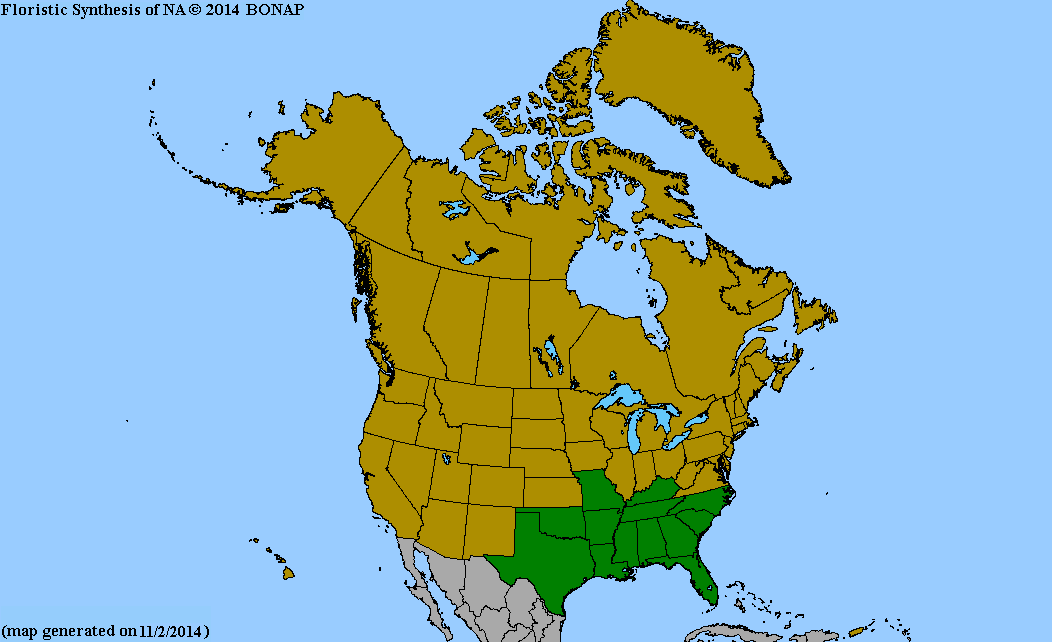 Map courtesy of The Biota of North America Program. Map color key Search Our Database: Enter any portion of the Scientific, Common Name, or both. Do a general Google search of the entire site: #ad
| #ad
| | ||||||||||
|
Commercial / Cookie Notice Looking for Wildflowers for a specific state? Check here: | |||||||||||||
|
All content except USDA Plants Database map Copyright Gerald C. Williamson 2025 | |||||||||||||
Code Update 20230302

